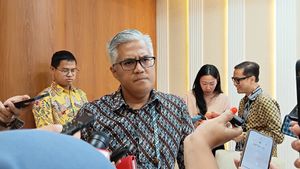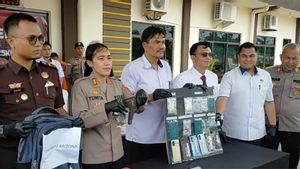JAKARTA - Spokesperson for the Indonesian G20 Presidency for Health, Dr. Siti Nadia Tarmizi, said that Indonesia encourages various steps to strengthen the global health architecture by building a coordinating role for the World Health Organization (WHO) and collaboration networks in the 2nd Health Working Group (HWG) meeting. .
"Strengthening the global health architecture by building the coordinating role of WHO as of course a global health institution, as well as building a collaborative network is very important," he said at the Ministry of Health press conference which was attended by virtual in Jakarta, quoted from Antara, Friday, June 3.
He said there were considerable differences in the capacities of countries and regions to detect and monitor various potential pathogens such as emerging viruses in genomic surveillance.
For this reason, strengthening the global health architecture and building collaborative networks are needed to prepare responses to these potentials so that the steps taken can be more effective.
The secretary of the Directorate General of Public Health at the Ministry of Health also expressed his hope that the 2nd HWG meeting on June 6-8 can provide certainty regarding the priority issue of financial intermediary funds (FIF).
"This is a technical priority which will of course be part of strengthening the global health architecture and also preparing for the future pandemic response," he said.
According to Nadia, this step will also strengthen the role of WHO in coordinating various responses related to global health issues.
The 2nd HWG is also expected to identify various possibilities to mobilize various health tools, diagnostics, vaccines and treatments as well as sustainable mobilization mechanisms to deal with future potential.
During the meeting, it is also hoped that there will be an agreement between G20 countries to continue using GISAID as a platform for sharing data as a form of global surveillance.
Nadia hopes that GISAID will be used not only to share data on influenza or SARS-CoV-2 that causes COVID-19, but also other potential viruses that can cause a pandemic.
The English, Chinese, Japanese, Arabic, and French versions are automatically generated by the AI. So there may still be inaccuracies in translating, please always see Indonesian as our main language. (system supported by DigitalSiber.id)









